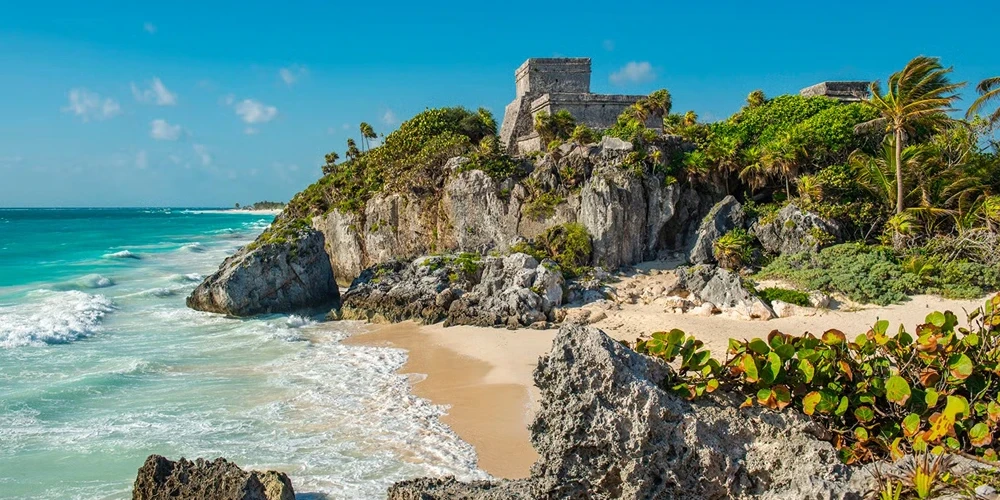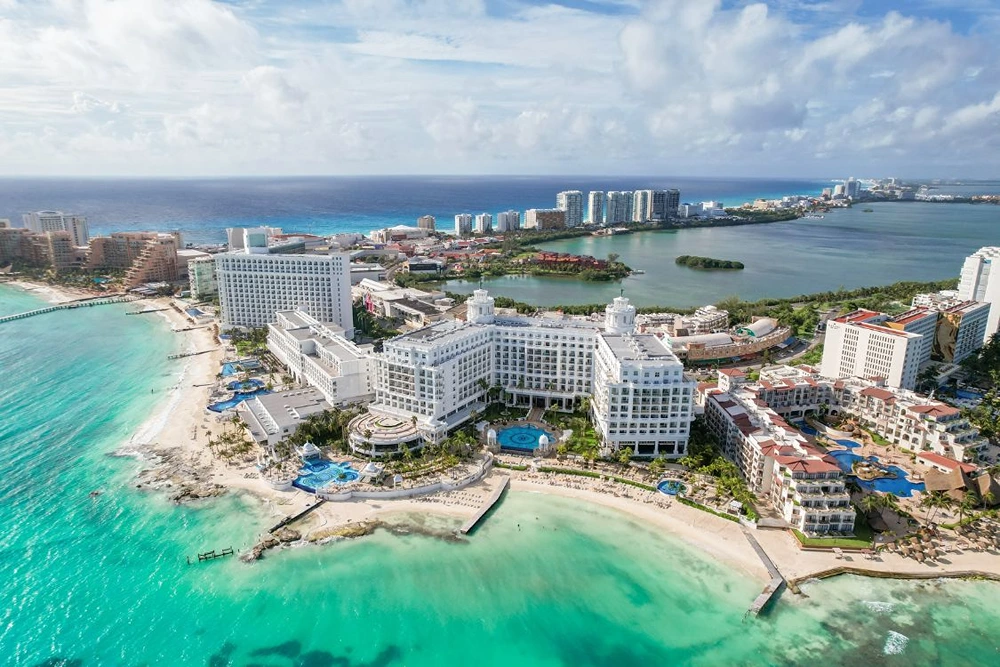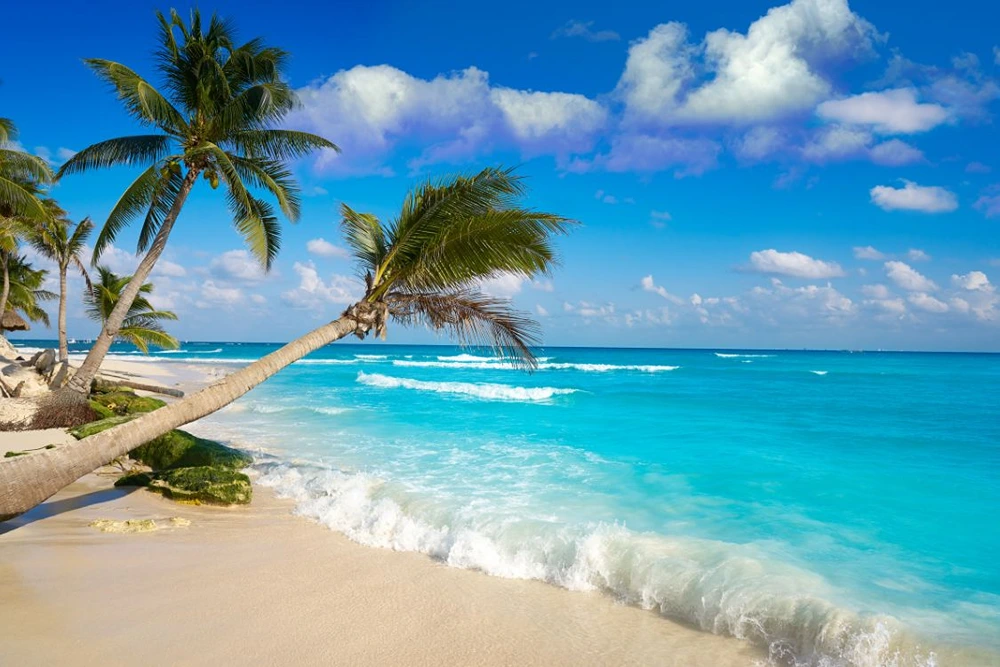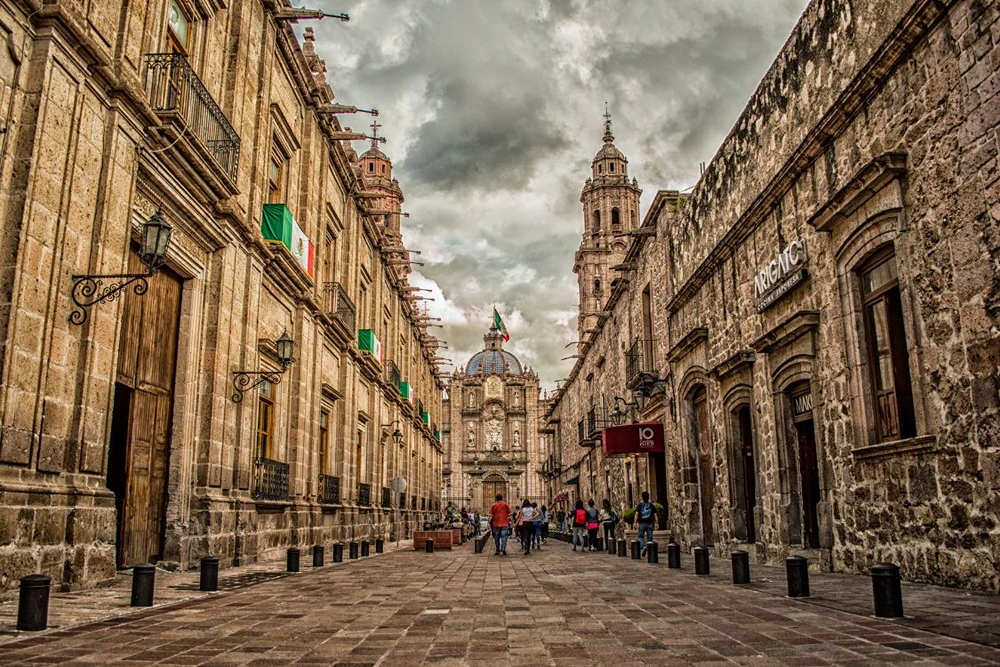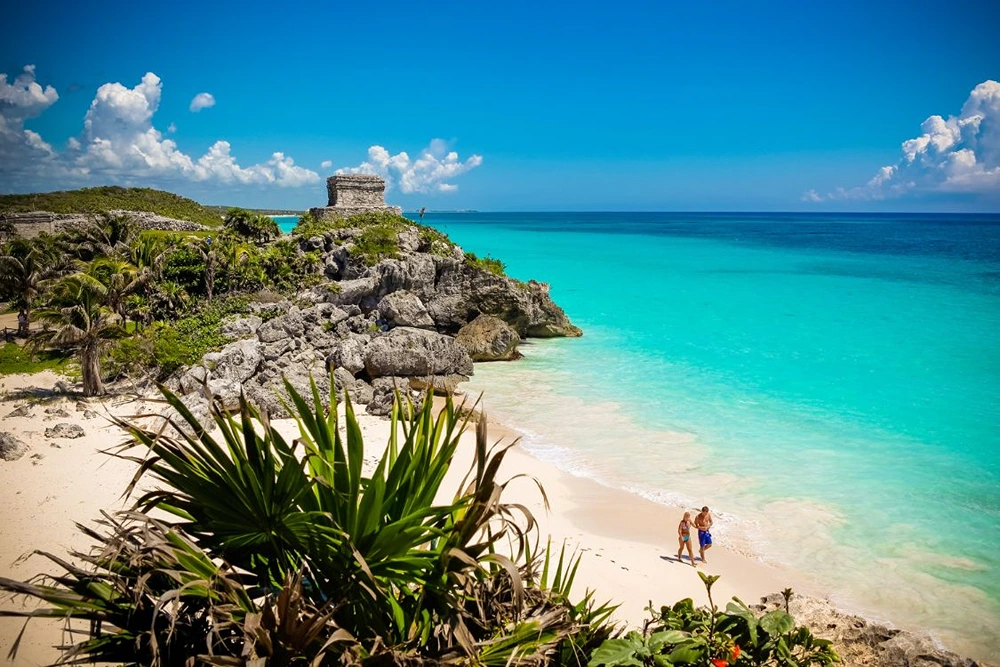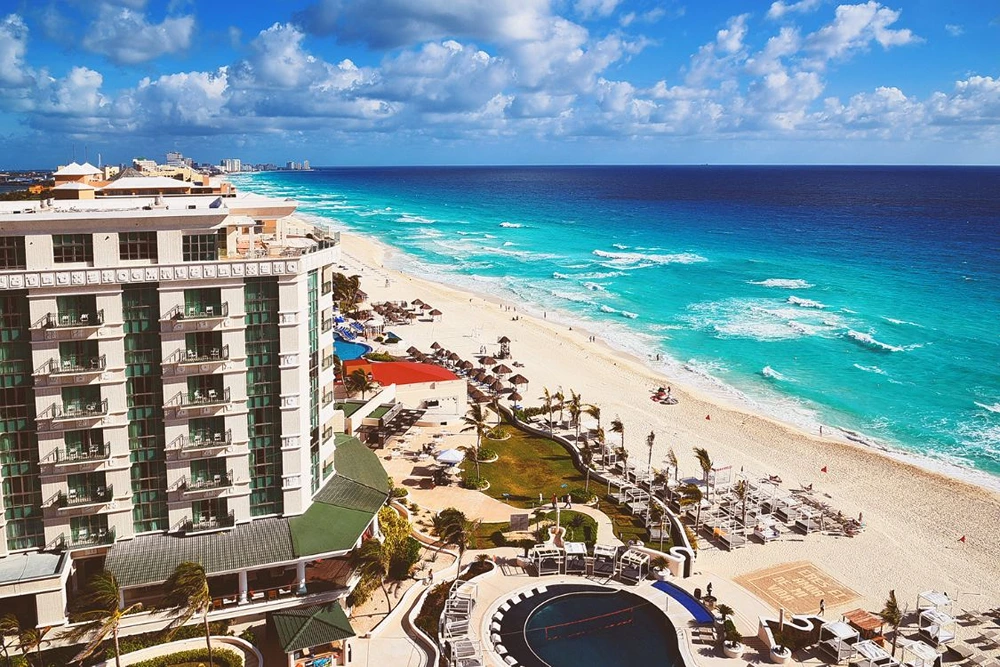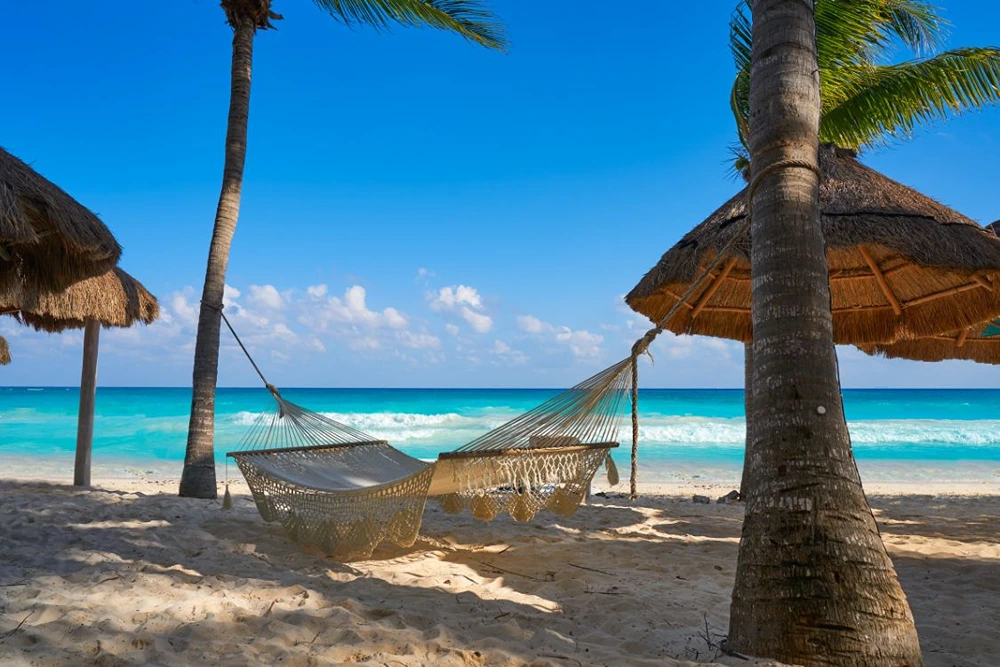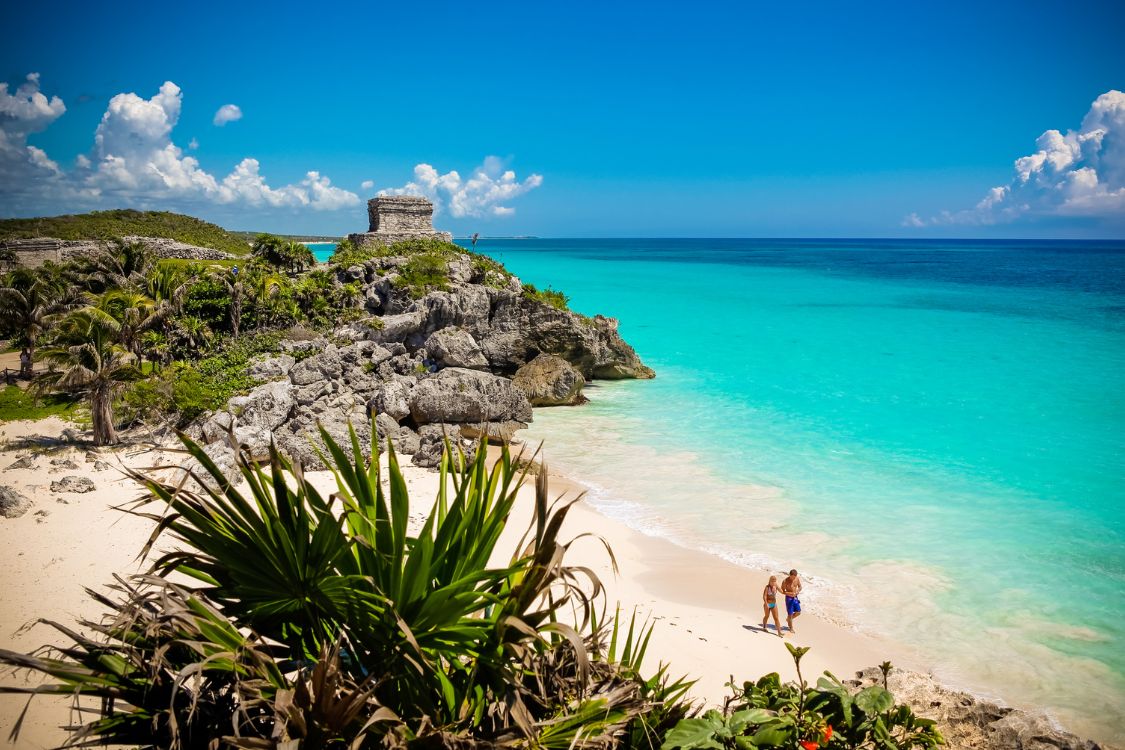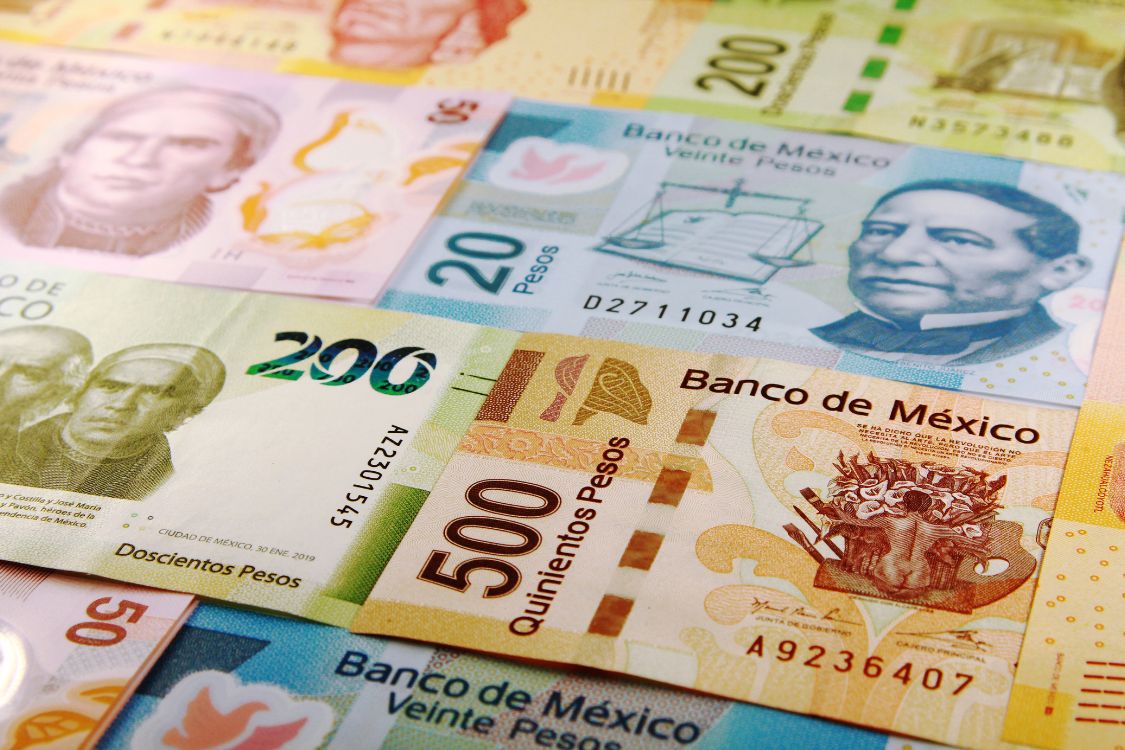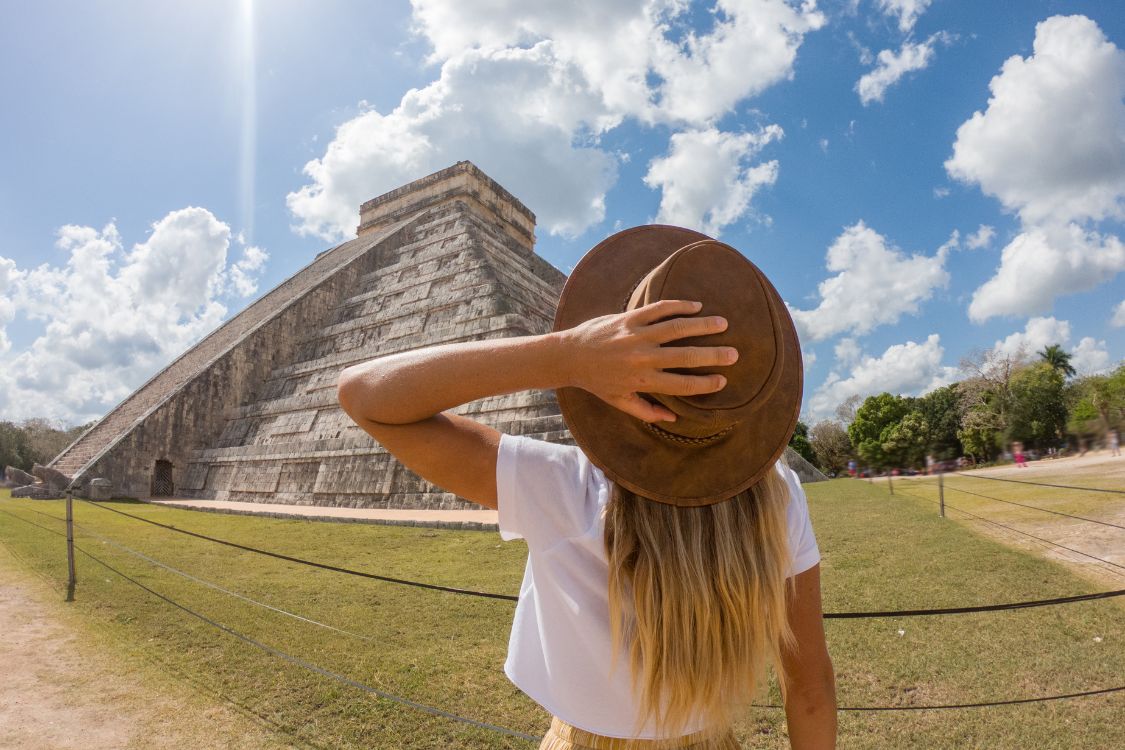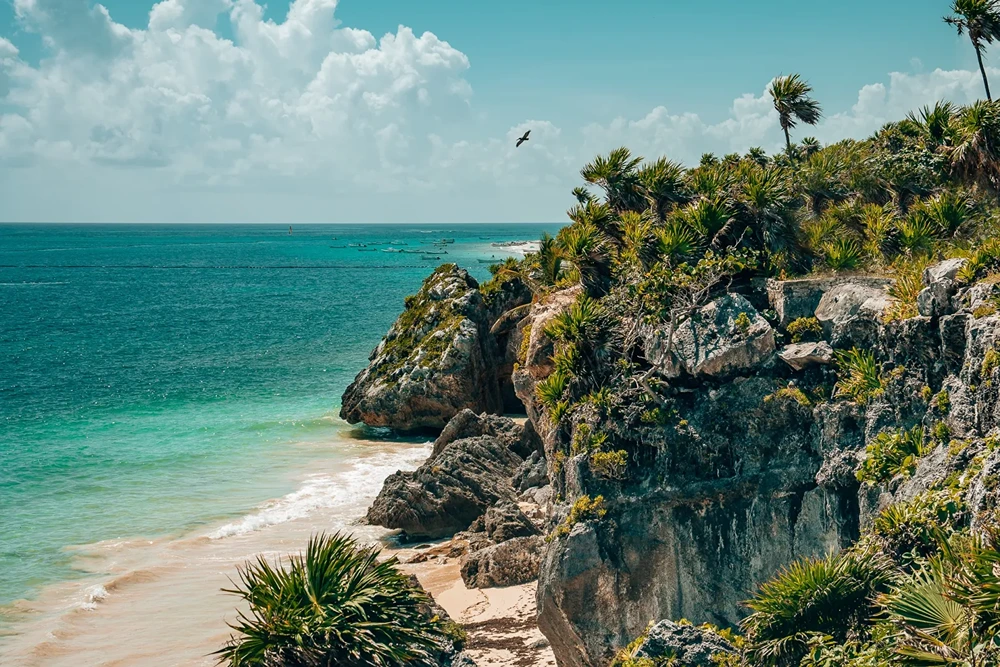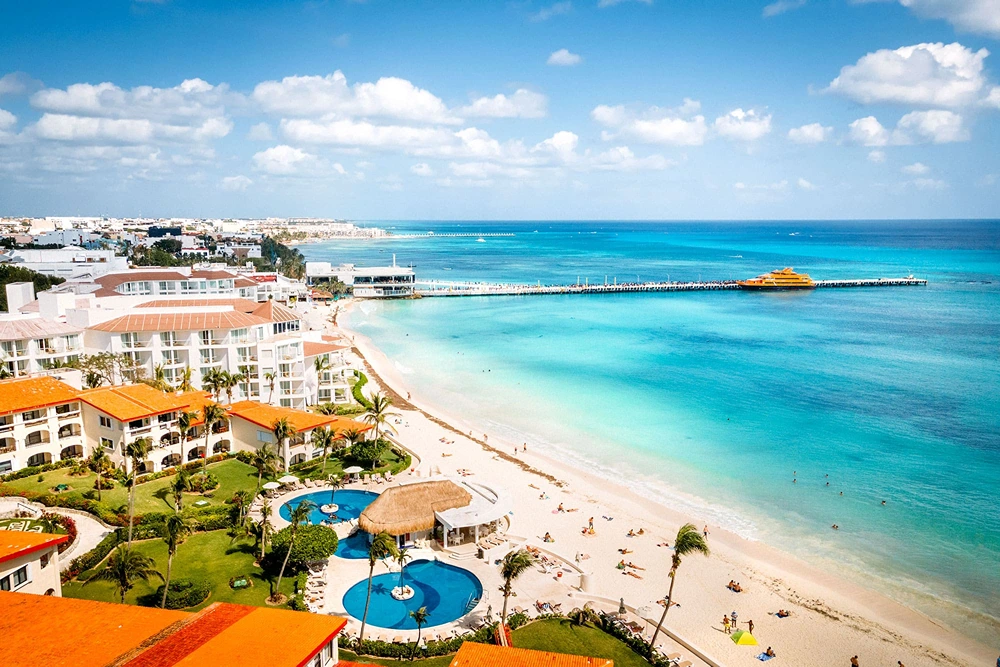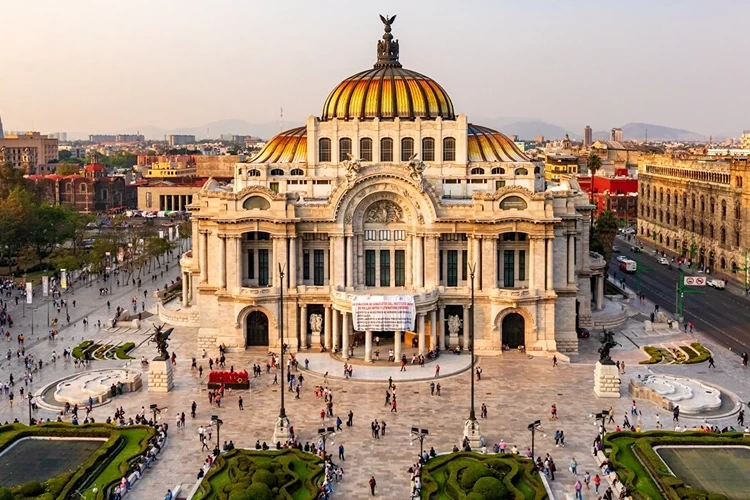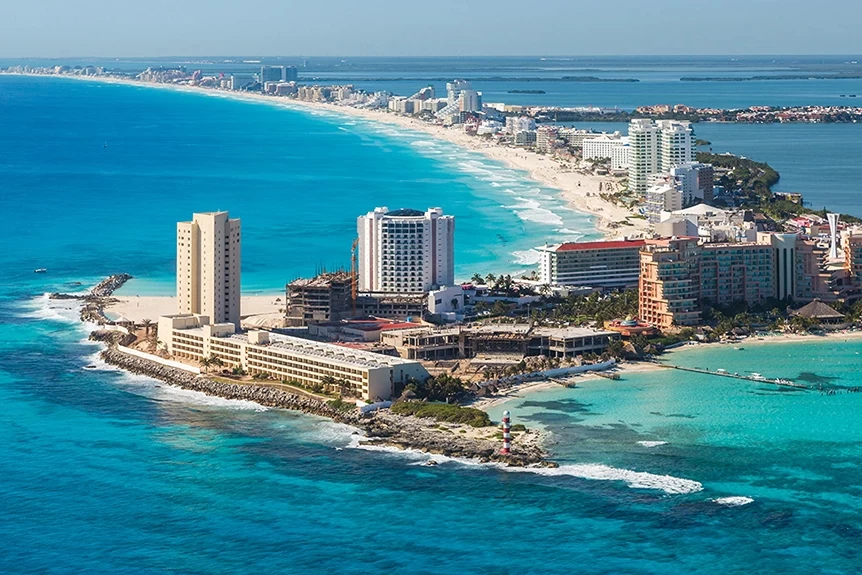Key Highlights:
- Location: Situated in the southern portion of North America
- Population: Approximately 130 million
- Languages: Spanish is the official language, with 68 recognized indigenous languages
- Nickname: “The Land of Enchantment”
Mexico is the 13th largest country in the world and offers visitors an exciting blend of pre-Hispanic and colonial history, vibrant arts scene, world-renowned cuisine, and breathtaking landscapes.
Travel Resources
To help you plan your perfect trip to Mexico, here are some essential resources:
- Flights: Find affordable flights to major airports like Mexico City (MEX) or Cancun (CUN) using our flight comparison tools.
- Insurance: Secure comprehensive travel insurance to protect against unexpected events, especially important for adventure activities.
- Car Rental: Book a rental car for flexibility in exploring Mexico’s diverse regions.
- Tours: Discover guided tours showcasing Mexico’s archaeological sites, colonial cities, and natural wonders.
- Packing: Use our Mexico-specific packing checklist to ensure you’re prepared for various climates and activities.
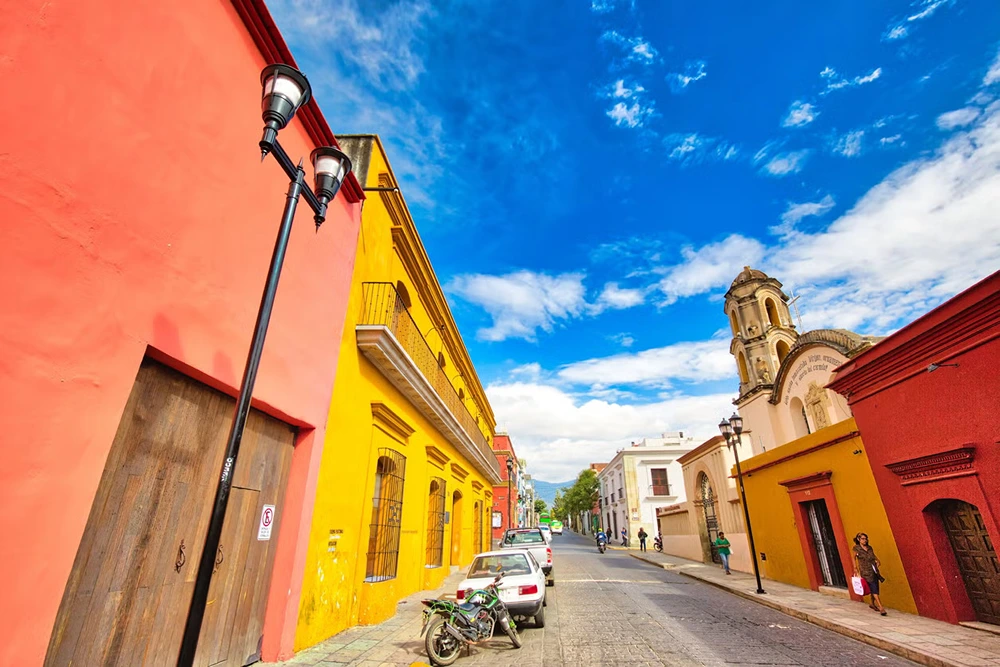
Some History First
Mexico’s history is a fascinating journey from ancient civilizations to a modern, diverse nation.
Key Historical Points:
- Pre-Columbian era: Home to advanced civilizations including the Olmecs, Maya, and Aztecs
- 1519-1521: Spanish conquest led by Hernán Cortés
- 1810-1821: Mexican War of Independence
- 1910-1920: Mexican Revolution
- 1994: North American Free Trade Agreement (NAFTA) comes into effect
- 2000: Vicente Fox elected president, ending 71 years of single-party rule
Today, Mexico continues to evolve as a major player in the global economy while preserving its rich cultural heritage.
Mexico Today
Modern Mexico is a vibrant blend of tradition and progress, offering visitors a unique and dynamic experience.
Notable Aspects of Contemporary Mexico:
- Economic Power: 15th largest economy in the world by nominal GDP
- Cultural Influence: Major exporter of art, music, and cinema to the Spanish-speaking world
- Tourism Hub: One of the most visited countries in the world
- Biodiversity Hotspot: Home to 10-12% of the world’s biodiversity
- Culinary Destination: Mexican cuisine recognized by UNESCO as Intangible Cultural Heritage
Is Mexico Safe?
Safety in Mexico varies by region, and most tourist areas are generally safe. However, it’s important to stay informed and exercise caution.
Safety Tips:
- Research your specific destinations and stay informed about current conditions
- Avoid displaying valuable items in public
- Use official taxi services or reputable ride-sharing apps
- Be cautious when using ATMs, especially at night
- Respect local customs and laws
Emergency Services: Dial 911 for police, fire, or medical emergencies
Where is Mexico?
Mexico occupies a strategic location, bridging North and Central America.
Geographical Details:
- Coordinates: 23°N 102°W
- Area: 1,972,550 km² (761,610 sq mi)
- Terrain: Varied, including mountains, deserts, and tropical forests
Bordering Countries:
- United States to the north
- Guatemala and Belize to the southeast
Coastline:
- Pacific Ocean to the west
- Gulf of Mexico and Caribbean Sea to the east
Latest Articles
From The Area
What is the Best Time to Visit Mexico?
Mexico’s climate varies greatly by region and altitude, offering year-round travel opportunities.
Seasonal Considerations:
- Dry Season (November-April):
- Pros: Ideal for most regions, less rain, comfortable temperatures
- Cons: Peak tourist season, higher prices
- Rainy Season (May-October):
- Pros: Lush landscapes, fewer crowds, lower prices
- Cons: Afternoon showers, higher humidity
- Hurricane Season (June-November):
- Affects coastal areas, particularly the Yucatan Peninsula
Best Time to Visit: For most travelers, the dry season (November-April) offers the best weather conditions. However, each region has its optimal visiting times.
Regional Variations:
- Beach Destinations: Year-round, but best December-April
- Colonial Highlands: March-May for mild temperatures and jacaranda blooms
- Mexico City: March-May for pleasant weather and purple jacaranda trees
How to Get to Mexico & Around
Mexico is well-connected internationally and offers various transportation options for exploring the country.
Getting to Mexico:
- By Air: Major international airports include Mexico City (MEX), Cancun (CUN), and Guadalajara (GDL)
- By Land: Multiple border crossings with the United States
- By Sea: Cruise ships dock at various coastal cities
Getting Around Mexico:
- Domestic Flights: Extensive network for longer distances
- Buses: Comfortable and affordable for inter-city travel
- Car Rental: Ideal for exploring at your own pace, but be aware of local driving conditions
- Taxis and Ride-sharing: Available in most cities and tourist areas
- Metro: Available in Mexico City and Guadalajara
Tip: For long-distance bus travel, consider premium services like ETN or ADO GL for added comfort.
Things to Do in Mexico
Mexico offers a wealth of attractions and activities to suit all interests.
Must-Visit Attractions:
- Chichen Itza: Ancient Mayan city and UNESCO World Heritage site
- Teotihuacan: Pre-Columbian city known for its massive pyramids
- Mexico City’s Historic Center: Rich in colonial architecture and museums
- Copper Canyon: Network of canyons larger than the Grand Canyon
- Tulum: Mayan ruins perched on cliffs overlooking the Caribbean Sea
Cultural Experiences:
- Dia de los Muertos (Day of the Dead): Colorful celebration honoring deceased loved ones
- Mariachi performances: Traditional Mexican music, often in Plaza Garibaldi, Mexico City
- Frida Kahlo Museum: Explore the life and work of the iconic artist in Mexico City
- Lucha Libre: Watch a traditional Mexican wrestling match
Outdoor Activities:
- Beaches: Relax on the shores of Cancun, Tulum, or Puerto Vallarta
- Whale Watching: In Baja California (December-April)
- Cenote diving: Explore underwater cave systems in the Yucatan Peninsula
- Monarch Butterfly Reserves: Witness millions of butterflies in Michoacán (November-March)
Where To Stay In Mexico
Mexico offers a wide range of accommodations to suit every budget and preference.
Popular Areas to Stay:
- Mexico City: For urban exploration and cultural experiences
- Riviera Maya: For beach resorts and access to Mayan ruins
- Oaxaca: For colonial charm and indigenous culture
- Los Cabos: For luxury resorts and stunning landscapes
Accommodation Types:
- All-inclusive beach resorts
- Boutique hotels in colonial cities
- Eco-lodges in natural settings
- Budget-friendly hostels
- Vacation rentals
Tip: Book in advance for high season (December-April) and popular events like Day of the Dead.
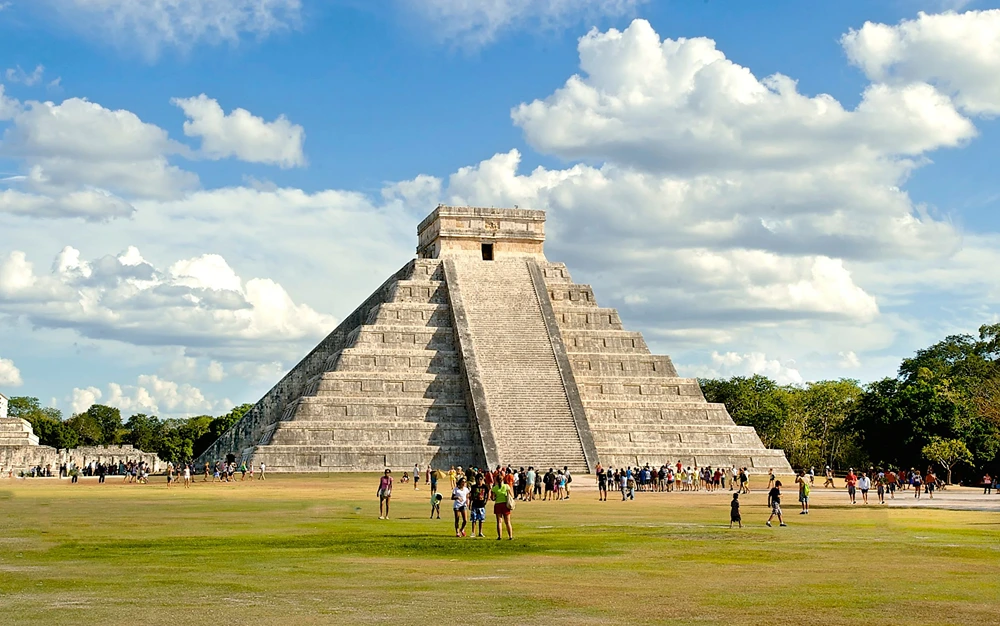
What To Eat In Mexico
Mexican cuisine is renowned worldwide for its flavors, variety, and use of fresh ingredients.
Must-Try Dishes:
- Tacos: Available in endless varieties, from street stands to gourmet restaurants
- Mole: Complex sauce with dozens of ingredients, often served over meat
- Pozole: Hearty hominy soup, traditionally served on special occasions
- Chilaquiles: Breakfast dish of tortilla chips in salsa, topped with eggs or chicken
- Cochinita Pibil: Yucatecan-style slow-roasted pork
Regional Specialties:
- Oaxaca: Known for its seven classic moles
- Puebla: Home of chiles en nogada and mole poblano
- Yucatan: Try sopa de lima and panuchos
- Baja California: Famous for fish tacos and fresh seafood
Tip: Don’t miss trying aguas frescas, fresh fruit drinks, as a refreshing non-alcoholic beverage option.
Entry & Exit Requirements
Visitors to Mexico must comply with Mexican immigration regulations.
Key Requirements:
- Valid Passport: Required for all international visitors
- Tourist Card (FMM): Required for all visitors, usually provided on arrival
- Visa: Many nationalities (including USA, Canada, EU) can enter visa-free for up to 180 days
- Length of Stay: Typically up to 180 days for tourists
- Proof of Onward Travel: May be required to show intention to leave Mexico
Note: Requirements can change. Always check the official Mexican government website or your country’s embassy for the most up-to-date information.
What To Pack For Your Trip
Mexico’s climate varies greatly by region and altitude, so packing adaptable clothing is key.
Essential Items:
- Lightweight, breathable clothing: For warm climates
- Sunscreen and insect repellent: Essential for beach and jungle areas
- Comfortable walking shoes: For exploring ruins and colonial cities
- Swimwear and beach essentials: For coastal areas
- Light jacket or sweater: For cooler evenings or high-altitude destinations
- Reusable water bottle: To stay hydrated (avoid tap water)
- Stomach medication: As a precaution when trying new foods
Tip: If visiting archaeological sites, bring a hat and plenty of water, as many sites offer little shade.
Remember to check current local guidelines and restrictions before your trip, as they may affect your travel plans and experiences in Mexico. ¡Buen viaje!
FAQs
Check the Mexican government’s official website to determine visa requirements based on your nationality.
Visit iconic sites like Tulum, Oaxaca, Puerto Vallarta, and the Copper Canyon.
It’s recommended to drink bottled or filtered water to avoid potential health issues.


